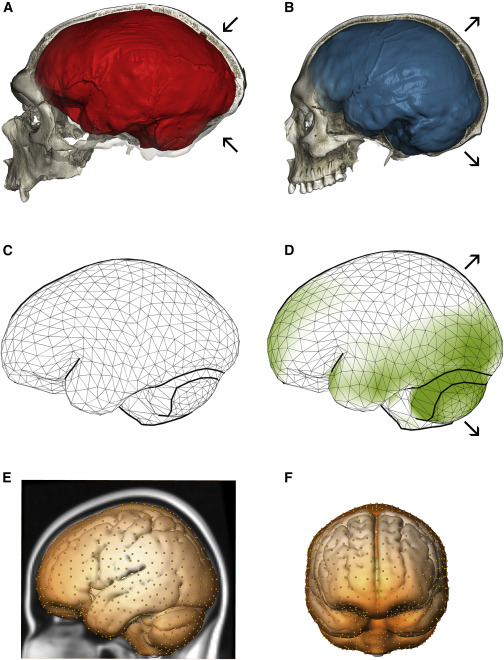NeandertalのTwitterイラスト検索結果。 98 件中 3ページ目
Krapina 4 is a fragmented skull of a Neandertal from around 120,000 years ago. This #hominin individual suffered a blunt force trauma to the left forehead, resulting in soft tissue infection of the area. Some healing happened prior to the individual's death. #paleaonthropology
@CrisR2021 Es posible que algunos neandertales tuvieran también pecas. Una cosa científica del ADN algo complicada de explicar.
#kleineKunstklasse ich bin zurück mit einer neuen #finishthecartoon Challenge!
Das Motiv ist Ah-Dam, der erste Homo-Sapiens im Neandertal und Gegenspieler von #Ugar.
Lest die neuen Regeln gut durch. Die zwei Files gibt es hier:
https://t.co/CI4RHUyB54
Recent work by Yolanda Fernández-Jalvo and Peter Andrews found that cranial fractures on the Spy 1 Neandertal skull were the likely cause of death of this #hominin individual. A new dating scheme places the Spy Neandertals between 44,300 and 40,700 years ago. #paleoanthropology
Homo antecessor is a species that occupies a fascinating time and place in human origins. The #hominin material from Gran Dolina are the closest known sister group to the common ancestor of today's people, Neandertals, and Denisovans. #paleoanthropology
The fossils from Caune de l'Arago, France, are around the same age as the large Sima de los Huesos sample of early Neandertals. Whether they represent the same #hominin population is not clear. They test our ability to determine relationships with morphology. #paleoanthropology
Léon Henri-Martin found the humerus of a Neandertal partial skeleton in 1911 at La Quina. He wrote, "The fragility and powdery state of the upper right maxilla made three teeth fall into my hands." #hominin #paleoanthropology
Nicht verpassen! Es gibt eine neue #Webcomic Episode von #Ugar dem letzten Neandertaler!
👉https://t.co/bsHfulfIK9
The #hominin skeleton from Saint-Césaire, France is one of the last known Neandertals and lived some 42,000-40,000 years ago. The individual suffered but survived, at least for several weeks, a sharp force injury to the head. #paleoanthropology #FossilFriday
Arago 44 is almost certainly not H. erectus. It may be an early Neandertal or another (H. heidelbergensis?) species. OH 28 could possibly be H. erectus, but if so may be a most recent occurrence of the species in Africa. I suspect it's something else.
Am 21.04. ist es endlich so weit. Meine neue #Webcomic Reihe "#Ugar - der letzte Neandertaler" startet exklusiv auf meiner Homepage. Ich hoffe auf viele Leser. Die ersten Infos gibt es bereits auf https://t.co/bsHfulfIK9
The Krapina Neandertal sample provides one of the most extensive dental records of any fossil #hominin population. Third molars may have erupted a bit earlier in this ancient group than in most people today, although within our extensive range of variability. @paleoanthropology
The three bones of the Swanscombe #hominin skull were found across 20 years within a gravel layer in the course of the ancient Thames River. The skull belonged to an early relative of Neandertals. #paleoanthropology #sciart
The La Quina 18 individual is one of the most complete skulls of a Neandertal child. Impressed with the Mousterian stone tools there, Léon Henri-Martin bought the site and excavated there for thirty years. #paleoanthropology
Apidima 1 may be the earliest European #hominin fossil aligned with African ancestors of modern people, more than 210,000 years old. But some specialists suggest it was an ancestor of Neandertals. Of course, it may be both. #paleoanthropology
Neandertal introgression sheds light on modern human endocranial globularity https://t.co/lEyX9keafd
Recent archaeological work has uncovered the aesthetic cultures of #Neandertals, who sometimes decorated themselves with colors, shells, talons, and feathers, marked and engraved cave walls, and had an ear for language. #Neanderthalthinking
Un estudio liderado por la Cátedra de Otoacústica Evolutiva y Paleoantropología(@HMHOSPITALES @UAHes ) reconstruye por primera vez la audición de los Neandertales y encuentra la prueba de que hablaban. Primera evidencia paleontológica de lenguaje fuera de nuestra propia especie.
Descubre los últimos hallazgos sobre los asentamientos neandertales de la mano de expertos arqueólogos.
Neandertales: el último refugio. Gran estreno el domingo 14 de marzo a las 18:00h, en National Geographic
The Steinheim skull has been a puzzle in #paleoanthropology. Today, we know that genetic exchanges with Africa influenced early Neandertals, and #hominin fossils from Apidima, Greece close in age to Steinheim may reflect this mixing. Why not this one too? #FossilFriday



























